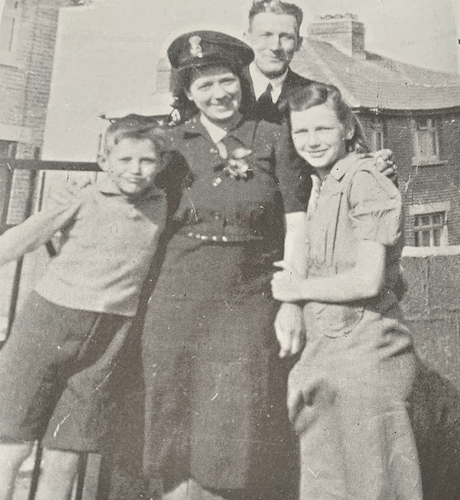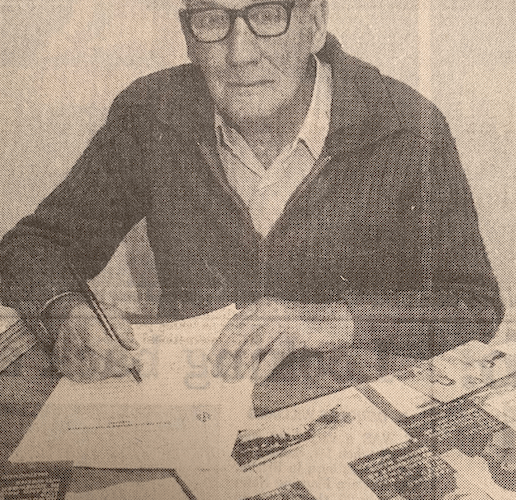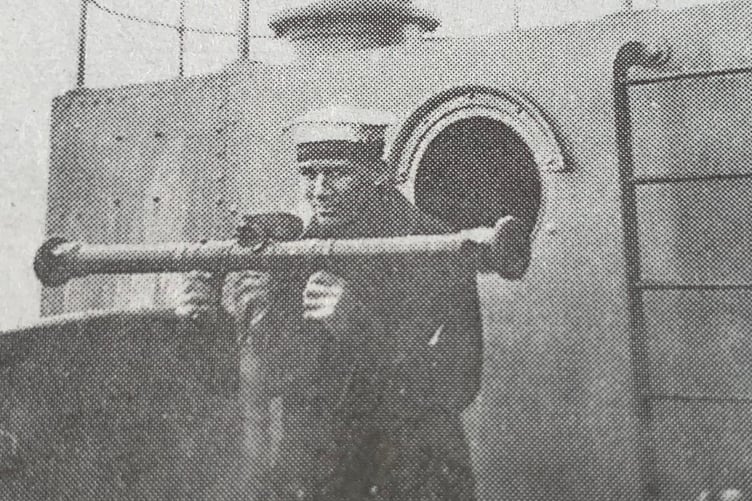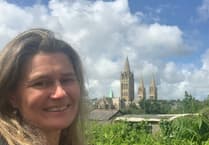Royal Naval Petty Officer and builder’s son, Tom Humphrey may have quietly worked as a storeman at RAF St Mawgan until his retirement, but his experiences in the far east during World War II are nothing short of gripping. Thanks to his great niece, Cara Biggs, the story can be retold.
In March 1942 Tom was aboard HMS Exeter when it was torpedoed by a Japanese warship in the Java Sea. It sank with the loss of fifty-five lives; Tom was one of six hundred who were found floating in the water and captured. His daughter Alicia recalls her father’s four-and-a-half-hour survival in the freezing water clinging to ship debris and balsa rafts. Though weak, Tom saved the life of his friend, George Darley who had sustained life threatening burns in the sinking by holding him afloat.

Alicia recalls her father’s response on being captured: “Shocked, but his survival instinct prevailed, his only goal was to survive against all odds and return home to his family. After his capture he found an old notebook, which he took; this became his war diary, a detailed account of his war experience.”
Tom was imprisoned, along with 1400 others at the Fukuoka No 2 camp, five miles from Nagasaki Bay. Conditions for prisoners, which included RAF pilots, was brutal: basic food (weeds and grasses from around the camp were used as vegetables to flavour the rice), it was cold, wet, little to no clothing and a daily ritual of severe beatings from their captors.
Prisoners were often forced to watch beheadings. Many died from disease (including pneumonia & pulmonary tuberculosis), malnutrition, mistreatment and accidents whilst working in the mines and the shipyards. Tom himself contracted beri-beri (a vitamin B1 deficiency) and suffered stomach issues caused by his ill-treatment for the remainder of his life.

“Following his imprisonment he must have had moments of despair, life seemed bleak and uncertain. Prisoners were forced to watch beheadings and horrific atrocities. His diary entries reflect his strength, hope and desire to return home. I believe the thought of being reunited with his family are what gave him the strength to carry on” reflected Cara, his great niece.
Many of the servicemen caught up in conflict in the far east rarely talked about their experiences. Tom preferred instead to capture his feelings in his diary (which he had to hide from the guards) or only talk to those who had experienced the same horrors in the camps.
One significant event that he lived through was the atomic bombing of Nagasaki. Daughter Alicia recalls:
“On August 9th1945, he watched in horror as an atomic bomb was dropped at Nagasaki Bay. Describing an ear shattering roar that shattered windows and buildings; a detailed account is in his diaries, which are on display in the Imperial War Museum.”
Despite his inhumane treatment there was a glimmer of kindness shown to Tom. A guard called Yakamoto gave Tom a service medal for fighting the Chinese, which he later turned into a necklace for his wife, Kath. Fifty years later in 1995 Tom was able to return it to Mr Yakamoto’s family. This was achieved by author Guy Stanley who worked with Tom in the publication of Nagasaki Six.
From reading his diaries it seemed that Tom did try and keep up morale amongst the prisoners, and shared what little food he had. An extract from an interview when his wife Kath was asked about the special qualities that helped him survive read, “Willpower, when they ate their rice he used to say, oh we’ve got steak, egg and chips today and junket and cream for afters.”
For eighteen months Tom’s family had no idea whether he was alive or dead. Only sporadic postcards later gave any clue to his whereabouts or condition. However, they did not reveal the true horror of his incarceration.

Tom died aged 91 in 1998, rarely having missed a reunion with his comrades. Seventy years after liberation a memorial commemorating the seventy-two who died at the Fukuoka No 2 camp (now a High School) was unveiled in 2015 which was attended by Tom’s daughter Alicia. Through SSAFA Alicia and her family were able to attend this symbolic event, give thanks to the people of Nagasaki and remember the sacrifices that were made for our freedoms today.
The RAF team would like to express their thanks to Cara and Alicia and her family for sharing Tom’s war diaries and for allowing us to share his amazing story.





Comments
This article has no comments yet. Be the first to leave a comment.